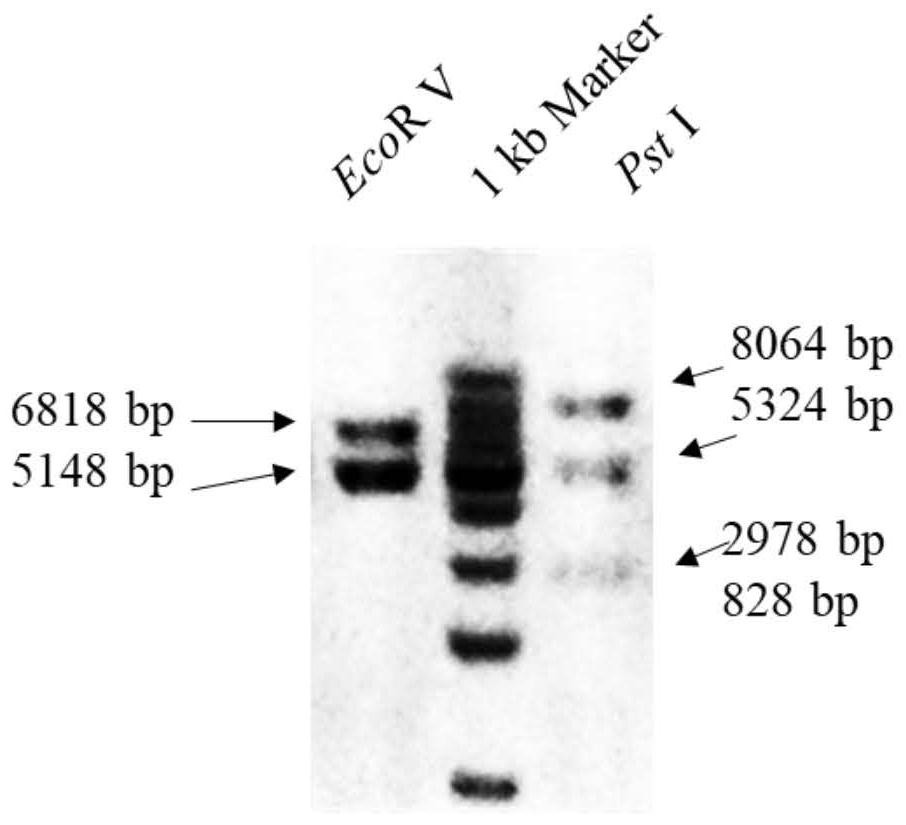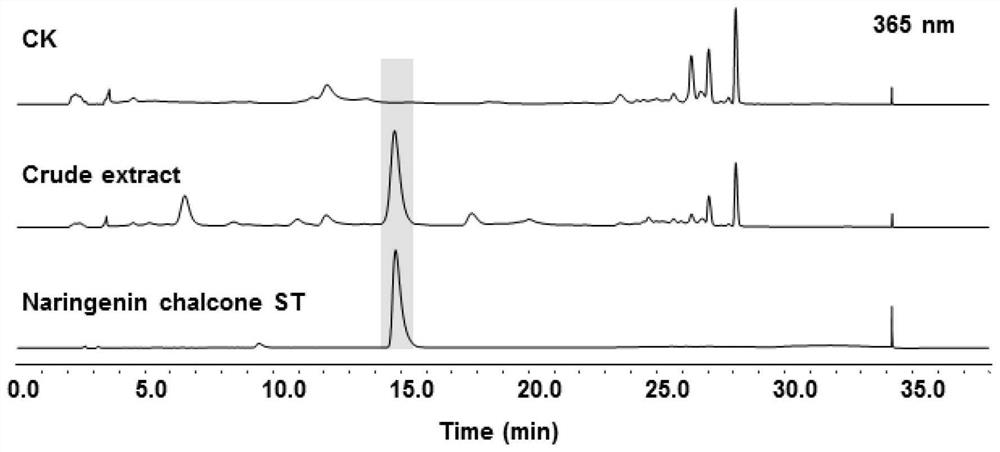NRPS-PKS hybrid protein capable of generating flavonoid compounds in fungi as well as encoding gene and application of hybrid protein
A technology of flavonoids and hybrid proteins, which is applied in the field of genetic engineering, can solve the problem that there is no report to prove that the synthetic genes of flavonoids are found, and achieve the effect of enriching sources
- Summary
- Abstract
- Description
- Claims
- Application Information
AI Technical Summary
Problems solved by technology
Method used
Image
Examples
Embodiment 1
[0038]Example 1 Construction of heterologous expression strain of PFICI_04360 gene in Aspergillus nidulans
[0039] Aspergillus nidulans LO8030 was used as the starting strain for genetic modification in this example.
[0040] The gene PFICI_04360 (as shown in SEQ ID NO.2) used in this example comes from Pestalotiopsis fici CGMCC3.15140, using the genome of Pestalotiopsis fici as a template, using high-fidelity enzymes and the following primers for PCR amplification It was divided into 3 segments for cloning, each segment contains about 150bp overlap sequence.
[0041] name Oligonucleotide sequence(5'-3') PF4360-1for ttcagtatattcatcttcccatccaagaacctttaatcgggcagttcacctccttgacc 4360-R1 ggaggatccaagaccaagatg 4360-F2 gactggttgcttcattggcacg 4360R2 ggagaatggcagtcgaatctgg 4360F3 gtcagcacgacaacgagctc PF4360-3rev cacaacatatttcgtcagacacagaataactctcgctagcgtgctaattccgacaagcc
[0042] Then use the yeast assembly technology (see the lit...
Embodiment 2
[0044] Example 2 HPLC verification of PFICI_04360 gene heterologous expression product in Aspergillus nidulans
[0045] In order to verify the product of gene heterologous expression, the PFICI_04360 heterologous expression strain obtained in Example 1 and Aspergillus nidulans LO8030 were respectively added to rice culture medium (80g rice, 1.2g YE, 115mL water were added in each 500mL Erlenmeyer flask, auxotrophic Added according to the genotype of the mutant strain, cultured at 25°C for 12 days in 121°C high-pressure steam sterilization (30mim), and then carried out compound extraction, and the extracted compound was used to detect the heterogeneity of PFICI_04360 in Aspergillus nidulans by high-performance liquid chromatography HPLC analysis method source expression product. see results image 3 and Figure 4 .
[0046] The extraction was carried out under the following conditions: the mycelium and the culture medium obtained after culturing for 12 days were subjected to...
Embodiment 3
[0050] Example 3 Isolation, purification and identification of the heterologous expression product of PFICI_04360 gene in Aspergillus nidulans - naringenin chalcone
[0051] In order to further confirm the heterologous expression products in Aspergillus nidulans, the PFICI_04360 heterologous expression strain obtained in Example 1 was fermented and cultured in rice medium. First, the strain was inoculated into GMM by streaking (supplementing corresponding nutritional deficiencies), and cultured statically for 3 days under dark conditions at 37°C. After sporulation, 0.1% Tween 80 was used to help moisten the spores, and the mycelium was filtered through a filter cloth to make a spore suspension. liquid. Add 80g of rice, 1.2g of YE, and 115mL of water into each 500mL Erlenmeyer flask, add nutritional deficiencies according to the genotype of the mutant strain, and sterilize with high pressure steam at 121°C for 30mim. Inoculate 2.5×10 rice medium in each bottle 7 spores were c...
PUM
| Property | Measurement | Unit |
|---|---|---|
| concentration | aaaaa | aaaaa |
Abstract
Description
Claims
Application Information
 Login to View More
Login to View More - R&D Engineer
- R&D Manager
- IP Professional
- Industry Leading Data Capabilities
- Powerful AI technology
- Patent DNA Extraction
Browse by: Latest US Patents, China's latest patents, Technical Efficacy Thesaurus, Application Domain, Technology Topic, Popular Technical Reports.
© 2024 PatSnap. All rights reserved.Legal|Privacy policy|Modern Slavery Act Transparency Statement|Sitemap|About US| Contact US: help@patsnap.com










